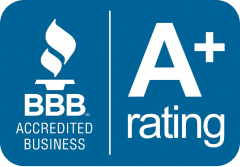Identifying the Differences Between Medicare and Medicaid

Dual Eligibility for Medicare and Medicaid: “Dual eligibles,” or Medicare-Medicaid participants, are those who are eligible for both Medicare and Medicaid. It’s vital to distinguish between the two words, Medicare and Medicaid because it’s easy to get them mixed up. Medicaid is a state and federal medical assistance program for financially poor people of all ages, whereas Medicare is a federal health insurance program for seniors and handicapped people.
Both programs provide a range of benefits, like medical visits and hospitalization, but Medicaid is the only one that covers long-term nursing facility care. Medicaid also pays for long-term care and assistance in-home and community-based settings, such as one’s own house, an adult foster care home, or an assisted living place, which is particularly important for the purposes of this article. However, Medicare Advantage plans (Medicare Part C) began covering certain long-term home and community-based services in 2019. The Centers for Medicare and Medicaid Services, abbreviated as CMS, oversees both the Medicare and Medicaid programs. For the Medicaid program, CMS works with state agencies to administer the program in each state, and for the Medicare program, the Social Security Administration (SSA) is the agency through which persons apply.
Find Medicare Plans in 3 Easy Steps
We can help find the right Medicare plans for you today
Definition: Dual-Eligible
Persons must be enrolled in both Medicare Part A (hospital insurance) and Medicare Part B (medical insurance) in order to be deemed dually eligible. Individuals can choose Medicare Part C, often known as Medicare Advantage, as an alternative to Original Medicare (Part A and Part B). (The federal government manages original Medicare, whereas Medicare Advantage programs are administered by Medicare-approved commercial insurance providers.) Participants in Medicare Advantage receive Medicare Parts A, B, and, in some cases, Part D, which covers prescription drugs.
In addition, individuals must be enrolled in either full-coverage Medicaid or one of the Medicare Savings Programs offered by Medicaid (MSPs). Physician visits, hospital treatments (in-patient and out-patient), laboratory testing, and x-rays are all covered under full Medicaid coverage. Medicaid also covers nursing home care and, in some cases, limited in-home personal care support. While some states provide long-term care and services in the home and community as part of their Medicaid programs, many others do so under 1915(c) Medicaid waivers.
(It’s worth noting that, unlike state Medicaid plans, Medicaid waivers are not entitlement programs, thus there are enrollment limitations.) As a result, service waitlists may occur). MSPs do not provide the same coverage as the plans described above, but they may help with Medicare premium payments and may also cover Medicare deductibles and co-payments.
Dual Eligibility's Advantages
People who are registered in both Medicaid and Medicare may be able to get more healthcare coverage and pay less out of pocket. Medicare is usually the first payer for Medicare-covered costs including medical and hospitalization (primary payer). Because they are Medicaid-covered items, if Medicare does not cover the entire cost, Medicaid (the secondary payer) will reimburse the remainder.
Some expenditures that Medicare does not pay, such as personal care help in the home and community and long-term skilled nursing home care, are covered by Medicaid (Medicare limits nursing home care to 100 days). As previously stated, certain Medicare Advantage plans will pay the cost of some long-term care treatments and supports. Medicaid also helps to offset the expenses of Medicare premiums, deductibles, and co-payments through Medicare Savings Programs.
Read More: How to Apply for Medicaid in 3 Steps
Benefits of Long-Term Care
Medicaid covers a wide range of long-term care benefits and services, allowing people to age comfortably at home or in their communities. Medicare does not cover these services, but in 2019, certain Medicare Advantage plans started covering a variety of long-term home and community-based treatments. Long-term care benefits may include the following. This is not an entire list, and not all advantages are offered in all states.
-Adult Day Health / Adult Day Care
-Assistance with Personal Care (at home, adult foster care homes, and assisted living facilities)
-Transportation for Medical and Non-Medical Purposes
-Care During a Break (to give the primary caregiver a break)
-Meal Delivery / Congregate Meals
-Home Modifications for a Home Health Aide or a Skilled Nursing Facility (widening of doorways, installation of ramps, addition of pedestal sinks to allow wheelchair access, etc.)
-Individual Emergency Response Systems (PERS)
-Chore / Housekeeping Services
-Services for Companions
-Transitional Assistance (from nursing home back to home)
-Treatments (physical, occupational, and speech)
-Administration of Medication
Durable Medical Equipment, such as wheelchairs and walkers, will be provided by both Medicaid and Medicare.
For Eligibility

Medicare
Because Medicare is a federal program, all states have the same qualifying requirements. Persons must be U.S. citizens or legal residents who have lived in the United States for at least 5 years prior to applying for Medicare. Applicants must also be 65 years old or older. There is no age limit for people who are incapacitated or have been diagnosed with an end-stage renal illness or Lou Gehrig’s disease (amyotrophic lateral sclerosis). Medicare eligibility is not based on one’s income. As a result, there are no income or asset restrictions.
People who get Medicare Part A are frequently not charged a monthly payment (hospitalization insurance). A person (or his or her spouse) must have worked for a minimum of 10 years and paid into Medicare to be eligible for premium-free coverage. It costs $471 to pay the entire monthly payment. (This amount, as well as the following Medicare figures, are for the year 2021.) Some people who have worked but haven’t reached the full job requirements are eligible to buy Medicare Part A for $259 per month. The deductible for in-patient hospitalization under Part A is $1,484 per year. After the deductible is satisfied, a cost-share (coinsurance) is required for services. For Medicare Part B (medical insurance), enrollees pay a monthly premium of $148.50 in addition to an annual deductible of $203.
A person must be enrolled in Medicare Parts A and B before enrolling in a Medicare Advantage (MA) plan. The monthly fee varies depending on the plan, but it is typically $33 each month. Although not all MA plans have a monthly premium, those that do are in addition to one’s monthly Part A and Part B payments, if any.
Medical and functional standards must be satisfied for Medicare Advantage plans that offer long-term home and community-based services as a supplementary benefit.
Medicaid
The Medicaid eligibility standards are not as clear as the Medicare eligibility requirements. This is because, as previously stated, Medicaid is a joint federal-state program. While the program’s parameters are determined by the federal government, each state is free to create its own restrictions within these boundaries. Even within the same state, many Medicaid paths exist, each with its own set of eligibility requirements.
Medicaid, unlike Medicare, imposes income and asset limitations. Individual income limits for institutional Medicaid (nursing home Medicaid) and Home and Community Based Services (HCBS) under a Medicaid Waiver are $2,382 per month in most situations as of 2021. For a single application, the asset limit is usually $2,000 dollars. The income and asset limitations differ from state to state. (A state’s Medicaid eligibility standards can be found here.) Applicants must also have a functional requirement for care, which is normally equivalent to the level of care offered in a nursing home. Find out more.
Medicare Savings Programs
The preceding financial factors are not used in the income and asset requirements for Medicare Savings Programs. The elderly can take advantage of three MSP schemes. Most states follow the criteria below (which are current as of 2021), however other states have their own set of rules. Alaska, Connecticut, the District of Columbia (DC), Indiana, Maine, Massachusetts, and Hawaii, for example, have greater income limitations, whereas Alabama, Arizona, Connecticut, Delaware, DC, Louisiana, Mississippi, New York, Oregon, and Vermont have no such restrictions.
Qualified Medicare Beneficiary (QMB)
The QMB program assists in the payment of Medicare Part A and Part B monthly premiums, as well as share of expenses, coinsurance, and deductibles. As a general rule, the income restriction is set at 100% of the Federal Poverty Level (FPL) plus a $20 allowance. This implies that a single candidate can earn up to $1,093 per month and a married pair can earn up to $1,472 per month. The asset restrictions for partial Medicaid are greater than those for full Medicaid. A single applicant’s maximum is $7,970, while a married couple’s limit is $11,960.Specified Low Income Medicare Beneficiary (SLMB)
The SLMB program assists with the payment of Medicare Part B premiums. In general, the income ceiling is 120 percent of the FPL plus an extra $20 that is not taken into account. A single person can earn up to $1,308 per month, while a married couple can earn up to $1,762. An individual’s asset maximum is $7,970, while a married couple’s limit is $11,960.
Qualifying Individual (QI)
The QI program, also known as Qualified Individual, assists in the payment of the Medicare Part B monthly premium. The income ceiling is 135 percent of the federal poverty level, plus a $20 exemption. A single applicant can earn up to $1,469 per month, while married couples can earn up to $1,980 per month. An individual’s assets are limited to $7,970, while a couple’s assets are limited to $11,960.
Becoming Medicaid Eligible
Please keep in mind that having income or assets over the Medicaid limit(s) in your state does not automatically disqualify you. This is due to Medicaid-compliant planning methods that aim to reduce a person’s countable income and/or assets in order to satisfy the limit (s). A word of caution: Assets must not be handed up for at least 5 years (2.5 years in California) prior to the application date for Medicaid.
(A 2.5-year look back is being implemented in New York for long-term home and community-based services.) This is because Medicaid has a look-back period during which previous transactions are scrutinized to ensure that an applicant (and/or an applicant’s spouse) has not gifted or sold assets for less than fair market value. If this criterion is broken, it is considered that the assets were transferred to fulfill Medicaid’s asset limit, and a term of Medicaid disqualification will be imposed as a punishment.
Find Medicare Plans in 3 Easy Steps
We can help find the right Medicare plans for you today
FAQs
How much comes out of your Social Security check for Medicare?
Premiums for Medicare Part B (medical insurance) are usually taken from any Social Security or Railroad Retirement Board payments you receive. In this instance, your Part B premiums will be deducted from your total benefit check. In most cases, you’ll pay the usual Part B premium, which in 2022 is $170.10.
Is Medicare taken out of your Social Security check?
Yes. In fact, if you are both enrolled in Part B and receiving Social Security benefits, Medicare can withdraw your Part B premium directly from your Social Security check. Premiums are withdrawn immediately from most Part B beneficiaries’ Social Security checks.
Is there really a $16728 Social Security bonus?
Most seniors are fully unaware of the $16,728 Social Security bonus: If you’re like most Americans, you’re behind on your retirement savings by a few years (or more). However, a few little-known “Social Security secrets” may be able to help you increase your retirement income.
At what age is Social Security no longer taxable?
You reach full retirement age at 65 to 67, depending on your birth year, and can receive full Social Security retirement benefits tax-free.
What is deducted from your monthly Social Security check?
Taxes might be deducted from your monthly benefit at a rate of 7, 10, 12, or 22 percent. These percentages are the only ones that can be withheld. The use of flat cash sums is not permitted. Sign the form and send or deliver it to your local Social Security office.
Why did I get two Social Security checks this month?
As the holidays approach, millions of Supplemental Security Income (SSI) claimants will receive two checks this month. According to the Social Security Administration, this will apply to the 8 million persons who are expected to receive SSI in 2022.
Will Social Security get a $200 raise?
While each person’s Social Security payment is determined by their earnings and years of service, a tiny number of people will receive an additional $200 or more per month in their benefit check.
What is the average Social Security monthly check?
Take a look at what the average Social Security payment is.
In January 2022, the average Social Security payout will be $1,657 per month. In 2022, the maximum Social Security income for someone retiring at full retirement age will be $3,345.
What changes are coming to Social Security in 2022?
In 2022, you’ll need to earn $6,040 or $1,510 every quarter to receive the maximum of four credits. The maximum amount of taxable income is $147,000. When you reach the age of 62 in 2022, you will be able to retire at the age of 67. If you claim benefits after turning 62 in 2022, your monthly income will be cut by 30% of your full retirement age benefit.
When a husband dies does the wife get his Social Security?
If the surviving spouse has achieved full retirement age, he or she can get 100 percent of the deceased spouse’s benefit, but the amount will be smaller if the deceased spouse claimed benefits before reaching full retirement age.







